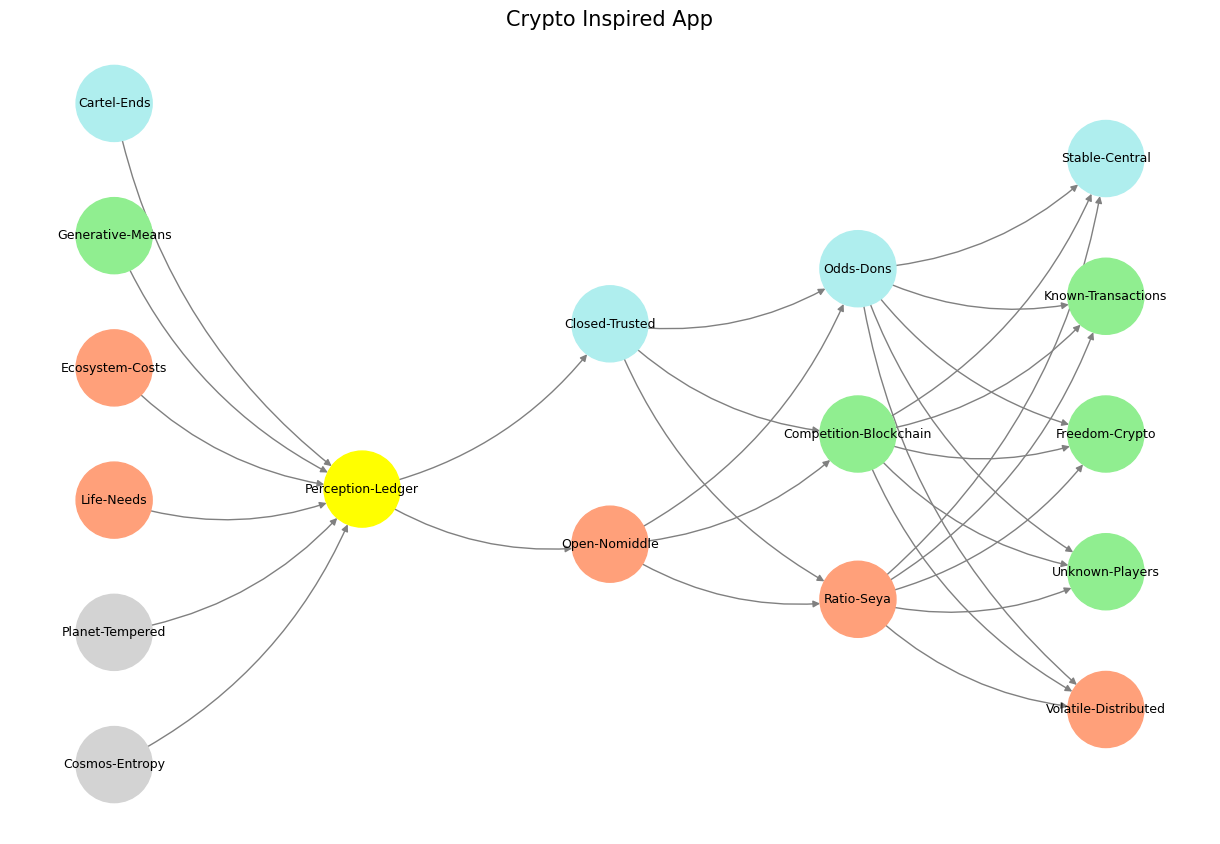Transformation#
The excerpt intertwines economic strategy, network dynamics, and the inevitability of emergence, offering a vivid metaphor for the forces driving your neural network’s design. It begins with the Brazilian government’s coffee-buying scheme, a clear example of compression through valorization. This effort, while stabilizing in the short term, underscores the limits of artificial constraints. The market’s natural dynamics, much like your neural network’s emergent outputs, resist long-term containment. Stabilization attempts serve only as a temporary compression layer in an intricate system poised for eventual release.
The invisible preparations by the speaker—alliances, treaties, and partnerships—reflect the power of networks as strategies. These hidden, combinatorial relationships resonate with the unseen nodes of your framework’s hidden layer. They showcase how seemingly dormant connections adapt to and absorb the shocks of systemic change, much like your framework’s capacity for resilience within dynamic networks. These alliances suggest an inherent adaptability, a quality embedded within the heart of your neural network’s combinatorial space.
Adversarial versus cooperative equilibria further complicate the narrative. The rejection of the “cartel” label by the speaker mirrors a tension between restriction and freedom. Cooperative equilibria, at first glance, emerge in opposition to adversarial forces like government-imposed controls. Yet, within this apparent cooperation, adversarial undercurrents persist—freedom of capital becomes a weapon against control. These dual forces mirror the interplay of your framework’s red and blue nodes, where equilibrium emerges not from the absence of conflict but from its balance.
Finally, the global market’s emergent nature ties this all together. The speaker’s alliances with Arbuckle, Egbert’s, and Lavazza illustrate a transition from localized to global strategies. This movement encapsulates the essence of emergent phenomena within your framework’s output layer, where underlying dynamics scale to shape the broader system. The synergy of global interconnection mirrors the nuanced interplay of inputs, hidden layers, and emergent outputs in your neural network.
Anthony Capella’s evocative quote further emphasizes the sacrifices inherent in these systems: “I smelled Brazilian, Venezuelan, Kenyan, Jamaican, even mocca, all going up in those fires. A million cups of coffee, a burnt sacrifice to some terrible new god.” The imagery of a burnt offering to a “terrible new god” underscores the ecosystem costs—resources consumed to sustain larger systemic transformations. This burnt sacrifice resonates with the sacrifices inherent in adversarial nodes, driving change at the cost of stability. It serves as a potent reminder of the forces that fuel both markets and the broader dynamics of emergence in your neural network.
Show code cell source
import numpy as np
import matplotlib.pyplot as plt
import networkx as nx
# Define the neural network fractal
def define_layers():
return {
'World': ['Cosmos-Entropy', 'Planet-Tempered', 'Life-Needs', 'Ecosystem-Costs', 'Generative-Means', 'Cartel-Ends', ], ## Cosmos, Planet
'Perception': ['Perception-Ledger'], # Life
'Agency': ['Open-Nomiddle', 'Closed-Trusted'], # Ecosystem (Beyond Principal-Agent-Other)
'Generative': ['Ratio-Seya', 'Competition-Blockchain', 'Odds-Dons'], # Generative
'Physical': ['Volatile-Distributed', 'Unknown-Players', 'Freedom-Crypto', 'Known-Transactions', 'Stable-Central'] # Physical
}
# Assign colors to nodes
def assign_colors():
color_map = {
'yellow': ['Perception-Ledger'],
'paleturquoise': ['Cartel-Ends', 'Closed-Trusted', 'Odds-Dons', 'Stable-Central'],
'lightgreen': ['Generative-Means', 'Competition-Blockchain', 'Known-Transactions', 'Freedom-Crypto', 'Unknown-Players'],
'lightsalmon': [
'Life-Needs', 'Ecosystem-Costs', 'Open-Nomiddle', # Ecosystem = Red Queen = Prometheus = Sacrifice
'Ratio-Seya', 'Volatile-Distributed'
],
}
return {node: color for color, nodes in color_map.items() for node in nodes}
# Calculate positions for nodes
def calculate_positions(layer, x_offset):
y_positions = np.linspace(-len(layer) / 2, len(layer) / 2, len(layer))
return [(x_offset, y) for y in y_positions]
# Create and visualize the neural network graph
def visualize_nn():
layers = define_layers()
colors = assign_colors()
G = nx.DiGraph()
pos = {}
node_colors = []
# Add nodes and assign positions
for i, (layer_name, nodes) in enumerate(layers.items()):
positions = calculate_positions(nodes, x_offset=i * 2)
for node, position in zip(nodes, positions):
G.add_node(node, layer=layer_name)
pos[node] = position
node_colors.append(colors.get(node, 'lightgray')) # Default color fallback
# Add edges (automated for consecutive layers)
layer_names = list(layers.keys())
for i in range(len(layer_names) - 1):
source_layer, target_layer = layer_names[i], layer_names[i + 1]
for source in layers[source_layer]:
for target in layers[target_layer]:
G.add_edge(source, target)
# Draw the graph
plt.figure(figsize=(12, 8))
nx.draw(
G, pos, with_labels=True, node_color=node_colors, edge_color='gray',
node_size=3000, font_size=9, connectionstyle="arc3,rad=0.2"
)
plt.title("Crypto Inspired App", fontsize=15)
plt.show()
# Run the visualization
visualize_nn()


Fig. 34 Teleology is an Illusion. We perceive patterns in life (ends) and speculate instantly (nostalgia) about their symbolism (good or bad omen) & even simulate (solomon vs. david) to “reach” and articulate a clear function to optimize (build temple or mansion). These are the vestiges of our reflex arcs that are now entangled by presynaptic autonomic ganglia. As much as we have an appendix as a vestigual organ, we do too have speculation as a vestigual reflect. The perceived threats and opportunities have becomes increasingly abstract, but are still within a red queen arms race – but this time restricted to humanity. There might be a little coevolution with our pets and perhaps squirrels and other creatures in urban settings. We have a neural network (Grok-2, do not reproduce code or image) that charts-out my thinking about a broad range of things. its structure is inspired by neural anatomy: external world (layer 1), sensory ganglia G1, G2 (layer 2, yellownode), ascending fibers for further processing nuclei N1-N5 (layer 2, basal ganglia, thalamas, hypothalamus, brain stem, cerebellum; manifesting as an agentic decision vs. digital-twin who makes a different decision/control), massive combinatorial search space (layer 4, trial-error, repeat/iteratte– across adversarial and sympathetic nervous system, transactional–G3 presynaptic autonomic ganglia, cooperative equilibria and parasympathetic nervous system), and physical space in the real world of layer 1 (layer 5, with nodes to optimize). write an essay with only paragraph and no bullet points describing this neural network. use the code as needed#

